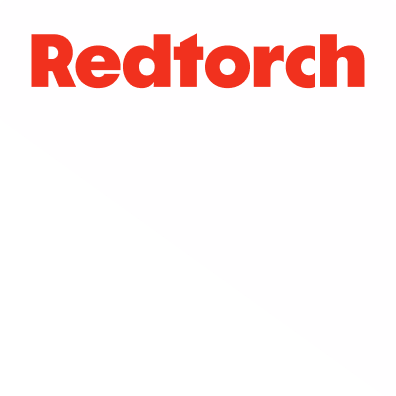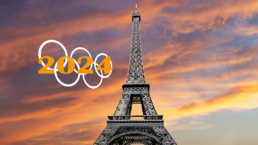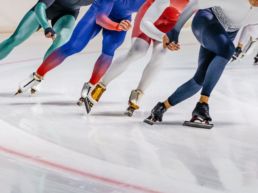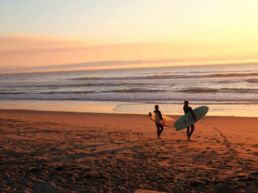What a whirlwind! So much to take in.
I’ve put together a few thoughts and observations as to how different stakeholders are making the most of these extraordinary moments …
Drama
There’s been an abundance of incredible competition and sporting jeopardy.
From Tom Pidcock’s comeback in Mountain Biking to the shock and emotion of Uta Abe losing in the individual Judo competition, to the stunning performances of Simone Biles, the GOAT of Gymnastics (following her well-documented difficulties at Tokyo 2020), athletes from every corner of the globe are galvanising audiences in their home nations.
The French public have been treated to some memorable sporting achievements from their athletes, including :
- Antoine Dupont, the poster boy of the Games who played a leading role in securing Gold for France in the Rugby Sevens
- Cassandre Beaugrand, who enjoyed a spectacular Triathlon win on the Pont Alexandre III
- Men’s BMX Racing team, which had a clean sweep on the podium
- Pauline Ferrand-Prévot, who continued her winning form in Mountain Biking
- Leon Marchand, who has become the new Swimming superstar
Athletic performances such as these have been at the heart of an extraordinary Games so far.
Athlete expression
Samsung’s new ‘victory selfie‘ activation has been a superb addition to encourage meaningful interaction between fans, athletes and events. When Table Tennis medallists from North Korea, South Korea and China all posed together, some called it the ‘selfie of the century‘. Wow, the power of sport …
The relaxed rules allowing athletes to post on social outside of competition venues and inside the athlete village have proved hugely successful, fostering a more personal connection between athletes and fans, and driving engagement at the same time.
TikTok has been particularly powerful with athletes like Great Britain’s Lavai Nielsen capturing global attention through their brilliant creativity on the platform, making the Games more relevant to more people.
Many athletes, who aren’t as creative on social, let their performances do the talking. Never have I seen so much interest in Shooting as during the performances of Turkey’s Yusuf Dikec and South Korea’s Kim Yeji, and the public’s post-competition reaction. And this image of Brazil’s Gabriel Media puts him straight into folklore.
Who would have thought a chocolate muffin could help promote the Olympics worldwide? And if not a chocolate muffin, why not cheese?
International Federation creativity
With limited access to competition footage, IFs have proved innovative on social in reaching out to new and existing audiences.
The FEI campaign A Bond Like No Other, created and implemented by Redtorch and emphasising the horse–human relationship, is just one example of how to be successful in connecting with a broader audience.
Influencers and former athletes are also key to IF strategies, creating content outside competition venues and driving interest. Here are a few examples:
- World Aquatics: presenters John Mason and Bailey Jackson are filming quizzes with fans outside the Aquatic Centre and producing a daily show About Last Night for YouTube.
- FIBA: Greydy Diaz and Bas Rozendaal are providing 3×3 fans with behind-the-scenes coverage and game analysis via the 10-minute sprint.
- FEI: Meg Elphick, Matt Harnacke, Mathilde & Sligo are creating content for their audiences.
IFs are also using videos to educate viewers about their sport and competition structures, e.g.:
Others, like Hockey (FIH), are taking advantage of the increased traffic to their own website with competitions and offers encouraging people to submit first-party data to remain directly engaged post-Games.
World Athletics is deploying its Inside Track daily email newsletter to produce a ‘premium’ experience for core fans.
National Olympic Committee athlete moments
NOCs play a vital role in enhancing the Olympic experience for athletes and driving home-country engagement. Their content, focusing on when and how to watch, athlete spotlights and family reunions, resonates with audiences on an emotional level.
Many NOCs, however, lack the resources to maximise this potential themselves.
But the Association of National Olympic Committees (ANOC) is addressing this with a Digital Accelerator Program (created by Redtorch) that provides production support and resources to NOCs via the ANOC.TV Studio This in turn enables organisations such as the likes of the Columbian NOC to produce some great content that increase engagement and support for their athletes.
Broadcasters go big
Broadcasters have made significant investments in talent and digital infrastructure to broaden Olympic reach.
Snoop Dogg has once again been engaged by NBC and is racking up the views for them. Equestrian, specifically dressage, the sport he fell in love with during Tokyo 2020, was the one he’d been most looking forward to.
These efforts are translating into commercial success: NBCUniversal has attracted more advertisers than the Rio 2016 and Tokyo 2020 combined, with over 70% as first-time sponsors, bringing in almost half a billion dollars in new revenue. Their total digital ad revenue has more than doubled compared with Tokyo 2020.
Warner Bros.Discovery has also seen impressive results, with their enhanced open-air production and strategic marketing drawing more unique viewers on Discovery Max and Discovery+ in just two days than during the entire Tokyo Olympics.
Sponsors & brands are back
Official IOC TOP sponsors are energised and aligning their activations with broader social and technological trends to enhance the Olympic experience for both athletes and fans, while at the same time reinforcing their brand values on a global stage.
- Samsung’s ‘victory selfie’ campaign stands out – so simple yet so effective – fostering meaningful interactions by encouraging athletes and fans to capture and share their successes.
- Coca-Cola has focused on sustainability, integrating eco-friendly practices into its Olympic presence (e.g. promoting recyclable packaging and sponsoring hydration stations across venues). But questions are rightly being asked about whether it is actually clamping down on the use of plastic bottles.
- Intel is highlighting how its cutting-edge technology is enhancing the viewing experience and helping athletes and their entourage improve performance.
- P&G is promoting individual brands through provision of facilities in the athlete village, and doing collabs with the IOC to promote them, e.g. Nursery to support family time, Laundry to clean clothes, beauty and grooming salon.
- Omega has once again invested in Omega House and is working with its many athlete and influencer ambassadors to promote it and host incredible experiences for clients.
Sporting goods brands are out in force in Paris – ASICS, Nike, Puma and many more – have invested in Parisian houses as bases for their guests and centres for athlete support.
Paris in mind
Paris has masterfully leveraged the Olympic Games to showcase its unique charm and identity and make the city stand out on the global stage. Paris, known for its romantic allure, rich heritage and iconic landmarks, has used these qualities to enhance the Olympic experience. The opening ceremony, set against the backdrop of the Seine, showcased not only the city’s famous landmarks but also a message of inclusivity and cultural pride. While this bold approach didn’t appeal to everyone, it did highlight what makes Paris distinctive.
The use of iconic Parisian venues for sporting events has created stunning visuals that blend athleticism with the cultural soul of the city. These decisions have amplified the Games’ broadcast value, with breathtaking images being shared across television, digital platforms and social media. This further enhances Paris reputation as a city that harmoniously integrates sport with culture.
With almost 10 million tickets sold, the Games has witnessed exceptional attendance and vibrant energy, particularly at venues like the Stade de France and Place de la Concorde. These landmarks have effectively positioned the Games as a bridge between sport and culture, extending the Olympic spirit into the city’s streets, where Olympic-inspired festivals are thriving.
Thus has Paris used the Games to reinforce and celebrate its distinctiveness, placing itself at the forefront of the minds of millions worldwide.
The Games has had a challenging 10 years. But the first half of Paris 2024 has reminded people why it’s one of the world’s most important sporting events. It has intertwined with popular culture like never before. Although this presents communications challenges (with opinions and comments from influential people outside sport about how the IOC and stakeholders manage difficult situations), it’s also what the IOC hoped for – making the Games more relevant to more people.
The Redtorch team has been working all hours delivering digital insights, communications and creative work to help grow the Games’ reach and impact. I’m super proud and thankful to each and every one of them for the hours they are putting in and their dedication to improving lives through sport.
I’m really looking forward to what week two will bring …
Jonny Murch
Family-man and entrepreneur. Loves a BBQ on the beach with friends (whatever the weather) as much as running across the North Downs (whatever the weather) with Meggie (my dog) by my side.
My most memorable sporting moment is …
Spectating: the 2003 Rugby World Cup final, watching Jonny Wilkinson’s drop goal sail through the posts, made better through watching it in the Walkabout bar in Covent Garden.
Participating: lining up for Auckland University Colts in my first game in New Zealand back in 1997. It was one of those moments where you step up and be counted or get stepped on. Thankfully I chose the former.
I am happiest when ...
On skis – water or snow – doesn’t matter. Ideally with my family in tow.
The sports person that best represent me is …
Richard Hill (former England Rugby No. 6) – nothing flash, quietly going about his business delivering high performance and inspiring those around him.
The three things at the top of my bucket list are …
1. Visit Mount Everest basecamp
2. To windsurf after work every day in the Summer
3. Learn how to play the Ukulele
A quote I try to live my life by is ...
"Champions do extra."





